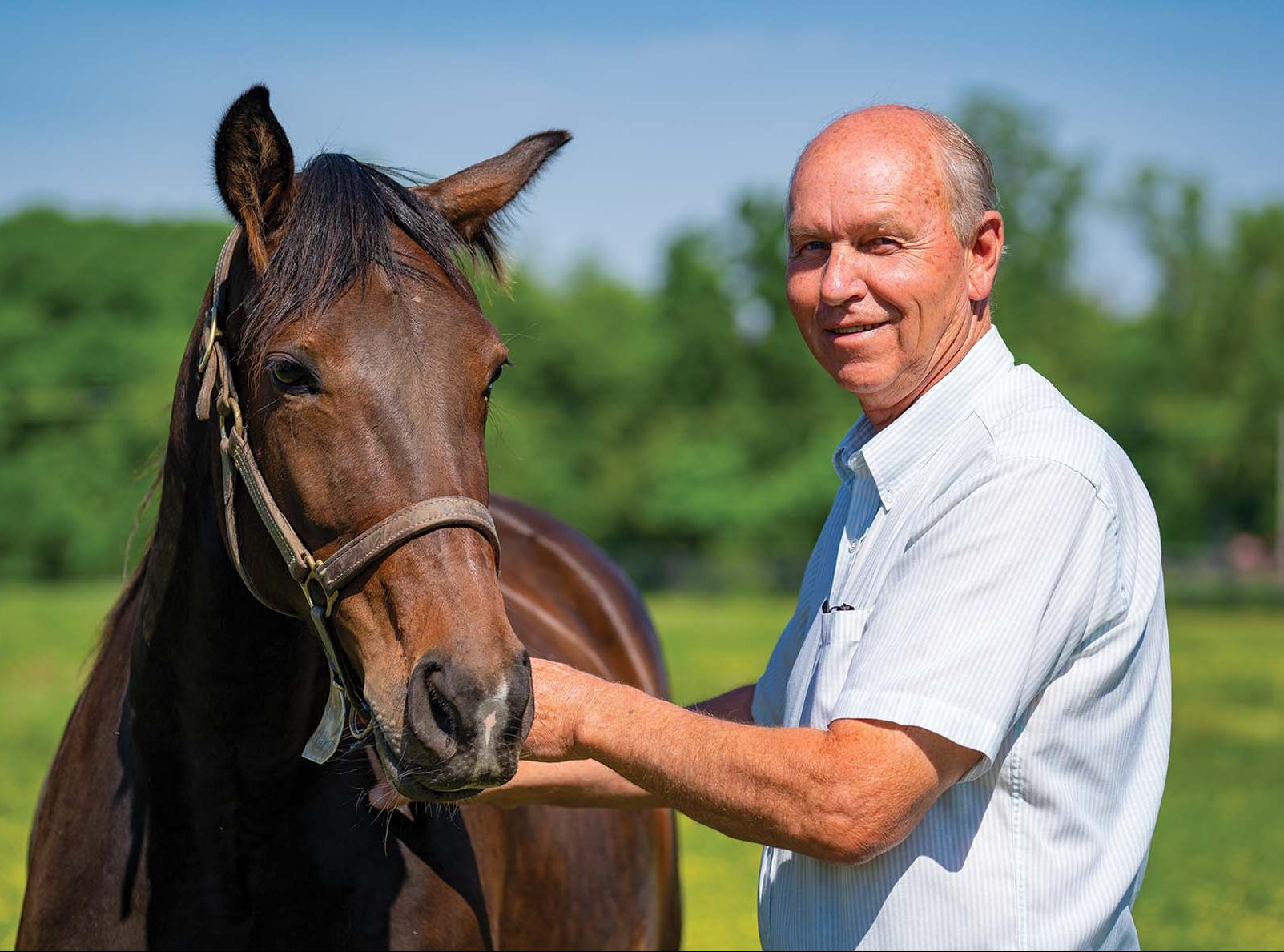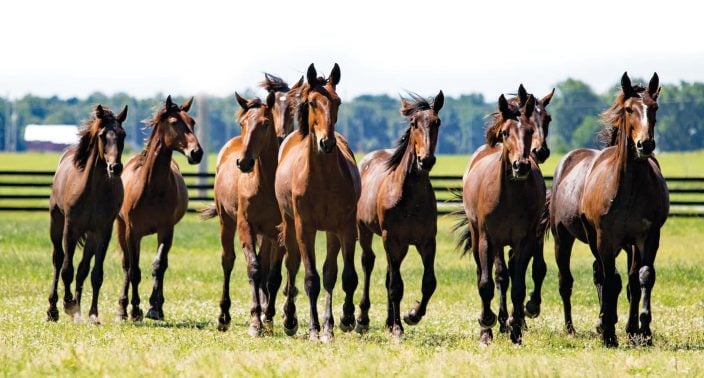Applications for Ohio Farm Bureau Health Plans now available
Members have three ways to apply: contacting a certified agent, calling 833-468-4280 or visiting ohiofarmbureauhealthplans.org.
Read MoreHis name sounds common, but Uncle Peter of Hickory Lane Horse Farm is strictly stud royalty.
The farm, in Findlay, is making the most of Uncle Peter’s storied background as a winner of the Breeders Crown in harness racing and one of the top breeding stallions in the country.
“His offspring are doing really well in their performances,” said Brad Wallace, farm manager at Hickory Lane. “His babies are at the top of the list in just about any way you break it down.”
Uncle Peter isn’t the only star stud at the 110-acre farm, a standardbred breeding facility for trotters and pacers that typically houses 100 to 147 horses at a time. What the Hill is the newest stud and Racing Hill and McArdle round out the group.

Four days a week, workers collect semen from the four stallions, cool it, pack it and either use it for the farm’s mares or sell it for $5,000 to $7,000 a vial. Some is shipped, some sent by courier and some is picked up. All will be used to artificially inseminate mares in the hopes that they’ll produce prize-winning standardbreds.
But there’s much more to the farm than semen collection. About 50 to 60 mares live there, some owned by the farm and some by the farm’s three owners — Wallace, attorney Kevin Greenfield of Perrysburg and Rebecca Buckner of Apple Creek.
Wallace, Greenfield and Leonard Buckner, Rebecca’s late husband, purchased the farm in 1996 from a group that had operated it as a breeding facility. It originally was a training operation started in the late 1960s by a local horse trainer and a wealthy businessman.
Wallace began working at the farm in 1978 under prior owners and now provides what he calls the “sweat equity” in the partnership. He grew up on a small farm in southeastern Ohio and graduated from Ohio State Agricultural Technical Institute in Wooster with a degree in horse production and management.
Wallace and a small crew of employees manage the daily work of a breeding operation, including helping deliver 50 to 60 foals a year and sending horses off to auction.
Buckner is a silent partner, and Greenfield, a self-identified “city boy” with a yen for harness racing, handles the legal side of the farm from his Toledo law office.
“We’ve scratched and clawed and gone through some terrible economic conditions and we’ve survived,” Greenfield said. “Now we’re actually breaking even and providing good livings for people. Our industry is agricultural and webs out to many different areas.”
Among those is Defiance County Farm Bureau member Dave Bockelman, who grows corn, soybeans, wheat (and straw) and hay on his family’s 1,000-acre farm in Richland Township in Defiance County. He feeds Hickory Lane’s need for 400 tons of hay a year, dropping off about 10 tons every two weeks.
“Brad and I have gotten along good over the years,” said Bockelman, noting that he’s provided the farm with hay for 25 years. “He’s always said I’ve been fair with him.”
Bockelman has several producers that he delivers to, noting that he’s been in the hay business for 50 years, but said he and Wallace really hit it off.
“Sometimes I’m sure he’s not going to take what I bring him, but he always does,” he said, acknowledging that the equine industry is an important part of agriculture.
Hickory Lane also uses about 175 tons of grain and 100 tons of straw a year, purchased from nearby farmers.
Greenfield and Wallace see a bright future for the farm. Ohio is the No. 1 state in the country for registered standardbreds and owners have had tremendous success with their breeding stallions, Wallace said. “Ohio is the heartbeat of the harness racing business,” he said. “And most of the money generated in this business goes right back into agriculture in Ohio.”
A return to horse racing was given the green light May 22 after two months of shutdown during the COVID-19 pandemic, but spectators were not allowed at live races. Tracks reopening in the state were required to follow a number of safety measures meant to encourage physical distancing.
An order was issued by the Ohio Department of Health June 16 regarding county fairs, including live racing. Visit ohha.com/covid19 for updates.


Members have three ways to apply: contacting a certified agent, calling 833-468-4280 or visiting ohiofarmbureauhealthplans.org.
Read More

One of the best decisions Shannon and Heather Utter made a few years ago was looking into a Farm Bureau member benefit that has ended up saving them thousands of dollars on their energy bills.
Read More

Ryan Hiser has experienced first-hand the importance of having the opportunity to vote on issues that will affect his family operation and other farmers.
Read More

Bill Patterson, Cy Prettyman and Adele Flynn will continue to serve as officers for Ohio Farm Bureau Federation.
Read More

Delegates discussed many topics impacting agriculture including farmland preservation, local foods, and succession planning.
Read More

Twenty-six farmers govern the state’s largest farm and food organization.
Read More

The 2025 recipients are Fred Cooke (posthumous) of Richland County, Marvin Dietsch of Williams County, Steven Knollman of Hamilton County and Michele Miller (posthumous) of Ottawa County.
Read More

Nathan and Jill Parriman grow seasonal crops, including Christmas trees, pumpkins and cut flowers, providing U-cut experiences that invite customers to engage directly with agriculture.
Read More

The 2025 Distinguished Service Award recipients are Craig Adams, Mike Townsley, and Kellogg Farms, Kurt Farms and Stateler Family Farms.
Read More

Ohio Farm Bureau Treasurer Adele Flynn participated in the meeting, representing Ohio farmers.
Read More